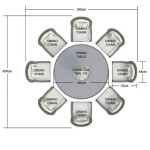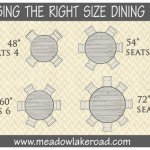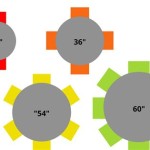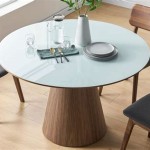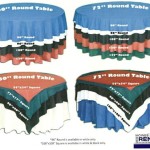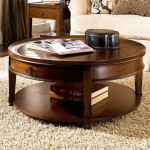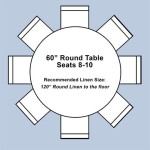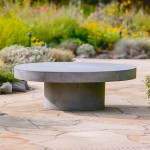How To Find The Right Tablecloth Size
Selecting the appropriate tablecloth size is crucial for achieving a polished and aesthetically pleasing dining experience. A tablecloth that is too small will leave the table exposed and appear inadequate, while one that is excessively large can be cumbersome and create tripping hazards. Determining the correct tablecloth size requires careful consideration of the table's dimensions and the desired drop length.
The "drop" refers to the amount the tablecloth hangs over the edge of the table. This measurement is a matter of personal preference, but there are general guidelines to follow for different occasions and table settings. A formal setting typically calls for a longer drop, while a casual setting might benefit from a shorter, more relaxed drop.
The initial step in finding the right tablecloth size involves accurately measuring the table's length and width. It is imperative to use a flexible measuring tape for precise results. When measuring, ensure the tape measure is held taut and runs straight across the surface of the table. For round tables, the diameter, which is the distance across the circle through the center point, needs to be measured.
Once the table's dimensions are known, the desired drop length must be determined. This is a crucial element in calculating the final tablecloth size. The drop length directly impacts the overall aesthetic and practicality of the table setting. Understanding the common drop lengths and their suitability for different occasions is vital for making an informed decision.
Calculating the tablecloth size involves a simple addition of the drop length to the table's dimensions. This calculation will yield the minimum tablecloth size required to achieve the desired look. For rectangular and square tables, the drop length must be added to both the length and the width. For round tables, the drop length must be added twice to the diameter.
Understanding Table Shapes and Measurement Techniques
Tables come in a variety of shapes, each requiring a specific approach to measurement and tablecloth selection. The most common shapes include rectangular, square, and round tables, but oval, oblong, and even custom shapes are also encountered. Understanding the nuances of each shape is essential for determining the correct tablecloth size.
Rectangular tables are characterized by their length and width. To measure a rectangular table, simply measure the length from one end to the other and the width from one side to the other. These two measurements are fundamental in calculating the appropriate tablecloth size. Ensure the measurements are taken at the widest points to account for any slight variations in the table's shape.
Square tables are similar to rectangular tables, but with equal length and width. Measuring a square table involves measuring the length of one side. This measurement will be the same for all sides, providing the necessary dimension for determining the tablecloth size. As with rectangular tables, accuracy is crucial for achieving the desired drop length.
Round tables present a different challenge, as they require measuring the diameter rather than the length and width. The diameter is the distance across the circle through the center point. To measure the diameter, run the measuring tape from one edge of the table, through the center, to the opposite edge. This measurement is critical for calculating the appropriate tablecloth size for a round table.
Oval and oblong tables are variations of rectangular and round shapes. For oval tables, it is often best to treat them as rectangular tables and use a rectangular tablecloth with a slightly longer drop to accommodate the curved ends. Oblong tables, which are essentially elongated rectangles with rounded ends, can be measured similarly to rectangular tables, paying close attention to the widest points of the table.
For custom-shaped tables, the measurement process may require a more tailored approach. It is advisable to create a template of the table's shape and dimensions on a large piece of paper. This template can then be used to determine the appropriate tablecloth size and shape. Consulting with a tablecloth specialist may also be beneficial for complex table shapes.
Determining the Ideal Tablecloth Drop Length
The drop length of a tablecloth significantly influences the overall appearance of the table setting. It is the distance the tablecloth hangs over the edge of the table. The ideal drop length depends on the formality of the occasion, the style of the table setting, and personal preference. Understanding the common drop lengths and their impact on the aesthetic is key to selecting the right tablecloth size.
A short drop, typically ranging from 6 to 8 inches, is often used for casual settings. This length allows the tablecloth to cover the majority of the table surface while remaining practical for everyday use. A short drop is less likely to be caught on chairs or cause tripping hazards, making it a suitable choice for informal gatherings and family meals.
A medium drop, ranging from 10 to 12 inches, is a versatile option that strikes a balance between formality and practicality. This length provides a more elegant look than a short drop, while still being manageable for everyday use. A medium drop is appropriate for a variety of occasions, from casual dinner parties to semi-formal events.
A long drop, ranging from 15 to 30 inches, is typically reserved for formal occasions and upscale dining experiences. This length creates a dramatic and sophisticated look, enhancing the overall ambiance of the setting. A long drop is often paired with fine china, crystal glassware, and elaborate centerpieces to create a truly memorable dining experience. However, it's crucial to be mindful of potential tripping hazards with longer drops.
For buffet tables, a floor-length tablecloth is often used to completely conceal the table legs and create a more elegant presentation. A floor-length tablecloth should just graze the floor without pooling or dragging, ensuring a clean and polished look. This type of tablecloth is particularly effective for hiding unsightly table legs or storage underneath the table.
In addition to the formality of the occasion, the style of the table can also influence the ideal drop length. A table with ornate legs or a decorative base may benefit from a shorter drop to showcase the table's design. Conversely, a simple table with plain legs may benefit from a longer drop to add visual interest and create a more luxurious feel. Ultimately, the choice of drop length is a matter of personal preference and should complement the overall aesthetic of the room.
Calculating the Final Tablecloth Size
Once the table's dimensions and the desired drop length are known, the final step is to calculate the appropriate tablecloth size. This calculation involves a simple addition of the drop length to the table's dimensions. The specific calculation varies depending on the shape of the table.
For rectangular and square tables, the drop length must be added to both the length and the width. For example, if a rectangular table is 60 inches long and 36 inches wide, and the desired drop length is 10 inches, the calculation would be as follows:
Tablecloth Length: 60 inches (table length) + 10 inches (drop) + 10 inches (drop) = 80 inches
Tablecloth Width: 36 inches (table width) + 10 inches (drop) + 10 inches (drop) = 56 inches
Therefore, the appropriate tablecloth size for this rectangular table with a 10-inch drop would be 80 inches by 56 inches.
For round tables, the drop length must be added twice to the diameter. For example, if a round table has a diameter of 48 inches and the desired drop length is 12 inches, the calculation would be as follows:
Tablecloth Diameter: 48 inches (table diameter) + 12 inches (drop) + 12 inches (drop) = 72 inches
Therefore, the appropriate tablecloth size for this round table with a 12-inch drop would be a 72-inch round tablecloth.
When calculating the tablecloth size, it is important to consider any potential fabric shrinkage. Some fabrics, such as cotton and linen, may shrink after washing. It is advisable to add a few extra inches to the calculated size to account for shrinkage and ensure the tablecloth still fits properly after laundering. Checking the fabric care instructions for anticipated shrinkage is highly recommended.
If a standard tablecloth size is not available to match the calculated dimensions, it is often better to choose a slightly larger tablecloth rather than a smaller one. A larger tablecloth can be adjusted or tailored to fit the table, while a smaller tablecloth will simply not provide adequate coverage. Alternatively, custom-made tablecloths can be ordered to ensure a perfect fit for unique table sizes and shapes. The ability to precisely tailor the tablecloth dimensions offers a level of customization unmatched by standard sizes.

Tablecloth Size Calculator Williams Sonoma Taste

Tablecloth Size Calculator Williams Sonoma Taste

How To Choose The Correct Size Tablecloth For Your Table

How To Choose The Correct Size Tablecloth For Your Table

Your Guide To The Perfect Tablecloth Size

3 Easy Ways To Measure Tablecloth Sizes Your Table Linens Size Guide

Tablecloth Size Chart Guide Cyruscrafts

Let S Talk Linens The Ultimate Guide To Table Linen Sizes Party Al Ltd Pink Hippo Blog

Let S Talk Linens The Ultimate Guide To Table Linen Sizes Party Al Ltd Pink Hippo Blog

3 Ways To Choose A Tablecloth Size Wikihow Life
Related Posts

